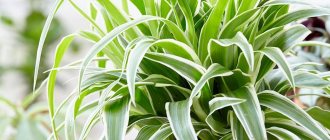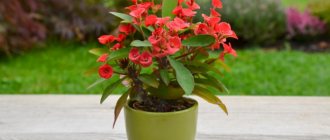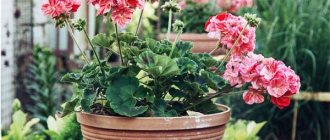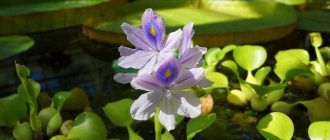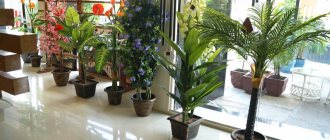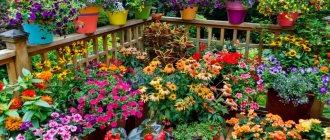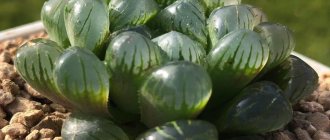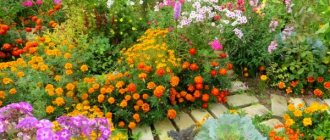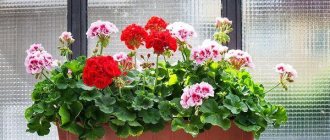Sansevieria (pike tail)
The plant, which is also called “mother-in-law’s tongue,” will give a head start to any humidifier.
Sansevieria grows in very dry places, and it has learned to produce a lot of oxygen from dry soil. Sansevieria can be safely planted even for lazy housewives who forget to water the flowers. And a life hack: if you add a little activated carbon to the soil, it will also clean the air.
HOW TO HUMIDIFY A ROOM
Symptoms of dry air If a person wears contact lenses, the influence of dry air can lead to irritation, redness of the eyes, and constant fatigue.
There is a feeling of “dusty” in the eyes, and the cornea itself suffers incredibly. In particularly advanced cases, “dry eye syndrome” appears. It becomes difficult to sit at the computer, TV or just read newspapers. The rapid process of skin aging begins. It loses its elasticity, begins to peel and may turn red in the corners of the eyes and mouth. There is a constant feeling of tightness, which can be confused with the feeling when sudden weight loss occurs. The outer part of the nose, sometimes the temples, suffers most from peeling.
There is a chance of drying out the nasopharyngeal mucosa. It becomes harder to breathe, the onset of a chronic runny nose and, in especially advanced cases, constant nosebleeds are possible. Immunity declines. The body becomes more susceptible to viruses and respiratory diseases. There are chances of developing asthma or allergies.
Chlorophytum
If you place several chlorophytums in one room, the air will be almost like in alpine meadows. A simple house plant fits perfectly into the interior and fills the apartment with fresh and clean air.
Moisture accumulates in the leaves and is released in large volumes, eliminating benzene and carbon monoxide. But don’t overdo it with seedlings, otherwise you risk turning your apartment into a greenhouse.
Home ecosystem
Since moisture-loving plants love a humid climate, many housewives purchase household air humidifiers specifically for their green pets. Such a small ecosystem can completely solve the problems of a dry climate in your home. This is especially true in winter, when heating reduces the humidity in the air to a critical level. It is during this period that many gardeners note yellowing and falling leaves of their home plants.
With the help of plants, it is possible to maintain comfortable humidity in the apartment, but this labor-intensive task requires certain skills, patience and free time. Work associated with business trips, long absences, illness do not allow us to pay due attention to flowers. In such cases, it is better to shift the concern for maintaining comfortable air humidity in the apartment to climate control equipment. Air humidifiers are best suited for this task.
Air humidification
Green plants use chlorophyll in their leaves to convert carbon dioxide (CO2) into oxygen with the help of sunlight. This biochemical process is called photosynthesis. Another benefit of indoor plants is natural air humidification, since more than 90 percent of irrigation water is returned to the environment—free of germs. Dry heating air in winter is a benefit for the nasal mucosa and an effective prevention of colds. At high temperatures in summer, the supply of moisture also provides pleasant coolness.
The more plants, the higher the oxygen and hydration productivity. Plants with large leaves such as parmania (indoor linden), fern, ficus, aglaonema variable and aralia are well suited for this purpose. Depending on watering intervals, indoor plants can increase air humidity by about five percent.
Tray with water
This method is especially good for plants that do not tolerate the presence of water on their leaves. Pour expanded clay, pebbles or hydrogel into a tray with a layer of 2–2.5 cm, and pour water into it so that the top pebbles or hydrogel granules are covered with water, but not completely, but only half. Place a pot with a plant on top, and place the tray on the windowsill above the central heating radiator.
Another way to increase humidity around the plant is to use a pot within a pot. Place the plant pot in another larger pot. Fill the free space between the pots with material with good hygroscopic properties (sphagnum moss, high fibrous peat, expanded clay), and constantly keep it moist.
IN THE PHOTO: Gardenias on a tray with wet expanded clay are not afraid of dry air
Spathiphyllum
It is popularly called “Women’s Happiness” because spathiphyllum blooms in spring. A beautiful indoor plant, a representative of the Araceae family. The plant is stemless, leaf blades grow at the very root. The flower needs a lot of bright light and high humidity. It is necessary to water abundantly in summer and moderately in winter. Cleans the room from benzene, ammonia, trichloroethine and formaldehyde, which evaporate from furniture surfaces.
Ficus
Ficus is one of the most popular indoor plants because it humidifies the air, fills it with oxygen, neutralizes toxins and viruses and absorbs a lot of dust. Thrives best in spacious homes with plenty of space and also requires constant shade. The most common type of ficus is Ficus Benjamin, which grows quickly and does not require frequent watering.
Myrtle
Myrtle is a symbol of peace and pleasure. People used to believe that this plant was sacred and that it could restore youth to people and fill travelers with additional energy. Today, some other beneficial characteristics of this plant have been identified. Myrtle removes excess moisture from the environment and kills germs.
What may be in polluted air
The degree of air pollution largely depends on the area in which you live. Houses located near highways or industrial production are at risk. In this case, the level of pollution in apartments exceeds the norm several times. In almost every modern home you can find the following compounds:
- petrol;
- ammonia;
- formaldehyde;
- xylene;
- trichlorethylene.
When combustion is incomplete, gasoline is released from the exhaust system of cars. It has a negative effect on the respiratory system, penetrates the circulatory system and harms the entire body.
Formaldehyde is used to make paper, wet wipes, and other products. This substance causes irritation to the respiratory system.
Ammonia is contained in cleaning products. It is quite dangerous and highly toxic. With short-term exposure it can cause poisoning, and with prolonged inhalation it can provoke asthma and allergies.
Xylene is found in rubber products. The vapors of this substance provoke irritation of the respiratory system and can also stimulate headaches.
Trichlorethylene is found in components for office equipment and computers. This substance affects the mucous membranes and can also lead to mild poisoning.
Crocuses love phosphorus: how to feed them before flowering so that they will surprise you in April
Extraction of white coral: the procedure is very similar to digging up potatoes
Blue or yellow: how to calculate your interior color by date of birth
Plants - air humidifiers Aglaonema (Aglaonema)
It not only combats dryness well in rooms, but also reduces the amount of harmful benzene, which is released from various plastics, paints and cheap furniture. A very tenacious plant, it survives long-term drought and does not require prolonged sunlight at all. An excellent option for people with long working hours or frequent business trips.
Sparmania
Sparmania (or “indoor linden”) is a large-leaved plant that in the future can grow to the size of a shrub (up to 1.5 meters in height). For your home, you can find a dwarf variety that reaches a height of about 80 cm. The plant comes from Africa, so it tolerates bright, diffused light well. Linden blooms in winter. It is quite demanding: sparmania must be frequently watered and moistened, and standard fertilizing must be applied. In the cold season, it is better to keep it at a temperature of about 10-12 degrees. In the room, the plant will evaporate a lot of moisture and humidify the air well.
Pelargonium
Also known as "geranium". A popular flowering plant that helps a person reduce stress, improve sleep and calm nerves. When caring for geraniums, it is important to follow the rule of watering: in winter - moderately, in summer - often. Pelargonium secretes bactericidal substances that reduce the level of protozoan microorganisms harmful to humans, such as staphylococci.
Special plants for the bedroom
A good room climate plays an important role, especially in the bedroom. Although plants primarily release carbon dioxide at night, when photosynthesis stops, there are species that absorb it at this time of day. They can be perfectly placed in the bedroom. Such plants include sansevieria (lat. Sansevieria, “pike tail”), aloe vera, bromeliad and orchid. The use of clay granules is recommended to reduce the need for constant maintenance with frequent watering. Granules are also less susceptible to harmful mold growth than regular soil.
Sansevieria or mother-in-law's tongue
This plant has wonderful properties: it refreshes the air, produces large amounts of oxygen and neutralizes harmful substances from synthetic materials. Because the plant retains moisture in its leaves, it should be watered frequently. In addition, Sansevieria does not require special attention to itself, so you can place it in any corner of the house.
Houseplants for Dark Rooms and Air Filtration
Zamioculcas is very easy to care for. It likes to stand in partial shade and even in a shady spot, its soil can dry out completely before watering.
Ferns are suitable for cooler rooms. They like shady places and temperatures between 10 and 18 °C. A house fern should ideally be located near a north window.
Common ivy (lat. Hedera helix) is also a resident of shady areas under trees and copes well with a small amount of light.
Ivy
Spathiphyllum (lat. Spathiphyllum) is ideal for the bedroom. As a natural air purifier, this plant filters pollutants (acetone, benzene and formaldehyde) from the air and provides a pleasant indoor climate.
If the air in the room is contaminated with formaldehyde, chlorophytum (lat. Chlorophytum) can be an effective remedy.
Sansevieria (lat. Sansevieria) also has a filter function and humidifies the air. The plant, known as pike tail or mother-in-law's tongue, is easy to care for, hardy and undemanding.
Generally speaking, the more plants there are, the higher the oxygen and hydration output. Large-leaved species such as nesting ferns are well suited for this purpose. However, it is somewhat sensitive to watering and should always have slightly moist soil.
If you don't want to spend a lot of time watering the plant, Zamioculcas is your option. It really only has one problem: it is often overwatered, which causes the plant to die.
Plants such as begonia do well in partial shade or partial shade.
Begonia
At room temperatures between 10 and 18°C, common ivy (Hedera helix) and ferns are also suitable for air purification.
